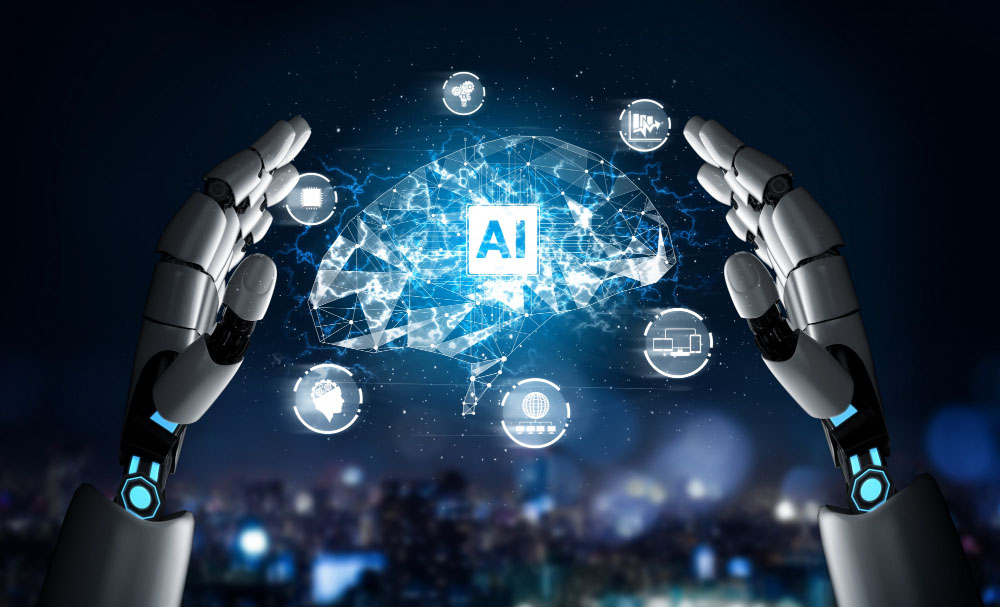Share this article:
Article courtesy of Jenna Berris, Qstream Product Marketing Manager.
There’s an overwhelming amount of data on why effective employee onboarding is critical and onboarding best practices need to be considered. For example, a well-designed onboarding program can increase new hire retention by 82% and 69% of employees are more likely to stay with a company for three years if they experienced a great onboarding process.
A strong onboarding experience doesn’t just help new hires thrive and save the organisation time and money; it also directly contributes to your business’s profitability. High-performing employees create high-performing companies.
Achieving effective onboarding and doing so with a recession on the horizon was the focus of research and analyst firm Brandon Hall Group’s (BHG) recent webinar on employee onboarding training trends in 2023.
Their Principal Learning Analyst, David Wentworth, was joined by Rahul Arora, Chairman and CEO of MPS Limited, Alison Hansen, TM Director of PepsiCo Inc. and Jennifer Zaborowski, Director of IT Learning & Development from Regeneron Pharmaceuticals. Having a mix of training and IT executives made for an interesting conversation on balancing the needs of new hires and training teams while scaling onboarding technology across the organisation.
Wentworth kicked off the onboarding webinar by sharing some recent BHG research: Only 9% of organisations achieve Level 4 of their Onboarding Maturity Model, where onboarding has a direct impact on business outcomes. What contributes to this disconnect? Participants cited too many priorities, shrunken budgets, lack of tech and dispersed workforces to name a few.
“All of us have been impacted by the shift in the way people are working and distributed workforces,” Zabrowski said, setting the stage. And while many organisations might put refining their onboarding programs on the backburner until we see how the economy shakes out, Arora says to be wary of taking this historical approach.
“For some reason, we all decide to invest in change management and technology programs when either we’re super busy or it’s too late,” he said. “It’s all about bringing performance to the core of the onboarding. This is an excellent time to reimagine your current setup.”
He recommends starting with an internal audit: “Do stakeholder interviews with managers, leaders and candidates to gather feedback and implement that feedback, explore and possibly even intelligently invest in smart tech.”
Here are the other pillars for onboarding success and key themes shared for employee onboarding best practices for 2023.
Support new hires with an all-hands-on-deck approach to employee onboarding
“Onboarding really is everyone’s responsibility,” explained Arora, “And while developing a culture that embraces this combined sense of responsibility is possibly more long-term, organisations can develop tactics to get people more involved.” This includes creating a network for new hires to learn from their peers beyond the traditional “buddy” system, looking at onboarding as a journey and not an event and structuring programs in a way that supports this, and finally measuring performance data on new hire retention and job success metrics during that journey and beyond.
I couldn’t agree more. Departments can no longer work in vacuums; and visibility and shared ownership is more important than ever with the rise of dispersed workforces.
Think about it: just because a person might specialise in a certain area, doesn’t mean they don’t have interest in other areas of the company. Plus, everyone can benefit from learning how other departments function and contribute to the overall goals of the business. Onboarding is certainly no exception here.
In fact, BHG found that 90% of companies are using or plan to incorporate peer-to-peer or informal learning. Panellists also noted that this support from people across the organisation can’t taper off and must remain consistent throughout the entire onboarding process.
What’s more, recent Gartner research found that only 31% of employees have a human-to-human connection with their colleagues today. Building those connections early and often will give you a leg up in assimilating new hires and retaining them long-term.
Prioritise personalised, experiential, “just-in-time” programming
With the exception of a brief tour of the company history, mission, vision and values, onboarding must be tailored by role and skill level. This is in part due to the digital landscape and the way that people are used to receiving relevant information where and when they need it.
Today’s learners want to be in the driver’s seat, said Hansen. “You can’t just have them go through a path that’s completely linear. They have to have some flexibility in how they do that.”
She and her team at PepsiCo are building role-based programs that allow new hires to skip or test out of certain modules based on their experience.
They also structure their program by differentiating between need-to-know information and resources for self-guided learning. “If you design an onboarding program and put everything in there, people are going to forget it,” she said. “You have to say, what does this person need to know right now? And so we say ‘just in time,’ not ‘just in case.’ We don’t load them up with what they might need to know but what we think they need to know now.”
Hansen agrees. “You’re creating a better experience for that person. So, they’re happier and more engaged,” she explained. “You’re also shortening their onboarding time because they don’t have to wade through all this useless, out-of-context material.”
Arora says experiential learning, or learning through hands-on experience and reflection, will become a huge focus in the future and could eventually account for about 80% of programming. BHG research confirms this trend and found that 93% of companies currently use or plan to implement experiential learning.
Zebrowski added, “We have to think of what kind of modalities we are going to serve up and how we are going to get people to practice and try to apply what they’ve learned.”
Take advantage of scalable technology as part of a blended learning approach
The pace at which technology evolves today has changed how the world both works and plays. Again, people want quick-hit information the second they need it and delivering onboarding in this format is the only way to engage increasingly shorter attention spans. Panellists discussed their approach to meeting these demands, citing implementing a combination of scalable technology and instructor-led programming as a critical success factor.
Zebrowski explains how her organisation is meeting the needs of a growing digitally native workforce: “For us, the learning strategy that I think will have a pretty significant impact is intelligent use of the technologies that are available now to make interactive learning the happy mix of in-person versus on a screen to serve that population.”
She also says that her team has found this group to be helpful in identifying areas for improved efficiency in the organisation’s broader use of technology.
Wentworth pointed out the importance of thoughtfully selecting the right technology and creating a plan, ahead of implementation. “That is the gateway to scale,” he said. “Technology is only going to do whatever it is you’ve set it to do. And if you’re doing it poorly, it’ll scale that, too. So, the idea is getting the right plan in place and then finding the right technology that aligns with your goals, outcomes, and your plan.”
Hansen added an interesting consideration about taking a holistic approach to scaling both technology and other human-to-human areas of onboarding. She said that scale goes beyond onboarding technology and extends into how you support folks participating in the onboarding process,” she explained. “We have sales trainers for our sales organisation. We also have people doing other training and various other roles interacting with new hires during the program.”
Organisations must take remote, hybrid and diverse workforces into account when building a scalable onboarding program, Zebrowski said. “We definitely have had to rethink how we’re orienting folks because we certainly want those who are remote or localised in another country to have the same in-depth, inculturation and a pleasant and engaging onboarding process as those who are at headquarters.”
She also recommends adding an additional layer during the onboarding phase that focuses solely on what expanding the program will look like over time. “It’s a more efficient process and you save yourself having to think about scaling as you’re scaling. If you build it in at the beginning, something that will continue to scale and can be maintained and enhanced rather than scrapped and redone every time you add a couple of people.”
Measure multiple areas of your onboarding process & equip managers with performance metrics
Measurement of learning programs is arguably the most important priority for training teams today so measuring employees early on during the onboarding period shouldn’t be excluded. However, many are left to rely on course completion rates and satisfaction surveys. None of this data tells you what people actually learned and whether or not they are ready to apply it on the job. It’s no wonder that this is the top learning challenge faced by organisations today, according to BHG research shared during the webinar.
“Measurement is such a critical element that organisations wish they could do better,” Wentworth explained. “They’re really good at measuring completion rates, scores, and assessments but when it comes to ‘did this thing actually make this other thing happen’, it’s very challenging.”
Panellists said their organisations are prioritising measurement in a couple of key areas.
“Learner feedback is probably one of the most robust measurement mechanisms for us,” said Zebrowski. “If our learners are enjoying it and we’re continuing to get feedback that they’re finding it helpful and it’s working for them, then that feels like we were heading in the right direction.”
Arora stressed the importance of measuring employee performance and tying it back to hiring and retention metrics. “Performance data needs to be at the core to show your return on investment for hiring and keeping top talent. Make sure that you have the metrics in place to manage this moving forward.”
Panellists agreed that this data should be used to assess and support new hires – correcting knowledge gaps during the process and encouraging managers to coach from day one. In fact, BHG research also found that 84% of companies are using or plan to incorporate coaching and mentoring in their onboarding programs. Doing so as soon as possible and giving managers visibility into how their new reports are faring helps establish those relationships. Plus, as Wentworth pointed out, managers can provide a wealth of input to support role-based onboarding and individualised learning journeys.
Qstream can help you achieve all of the above for employee onboarding this year
Listening to the webinar as a participant, I was on the edge of my seat. I wanted so badly to interject and share how our award-winning microlearning and knowledge reinforcement platform supports each of these areas.
Qstream is perfectly suited for onboarding new hires across hybrid, distributed, digital-first workforces and doing so in a way that is engaging and proven to build long-term knowledge retention.
- Our science-backed microlearning technology blunts the forgetting curve, reinforcing job-critical information and confirming via analytics that concepts have been retained and mastered.
- Learners receive a few quick questions a day until they have proven they are ready to apply training material in their roles.
- Learning leaders and managers then get access to robust, customisable analytics to build and refine programs and enable targeted coaching for early success.
You can learn more about Qstream here or by emailing us at info@validity.group.
Watch video “Qstream in 2 Minutes”:


